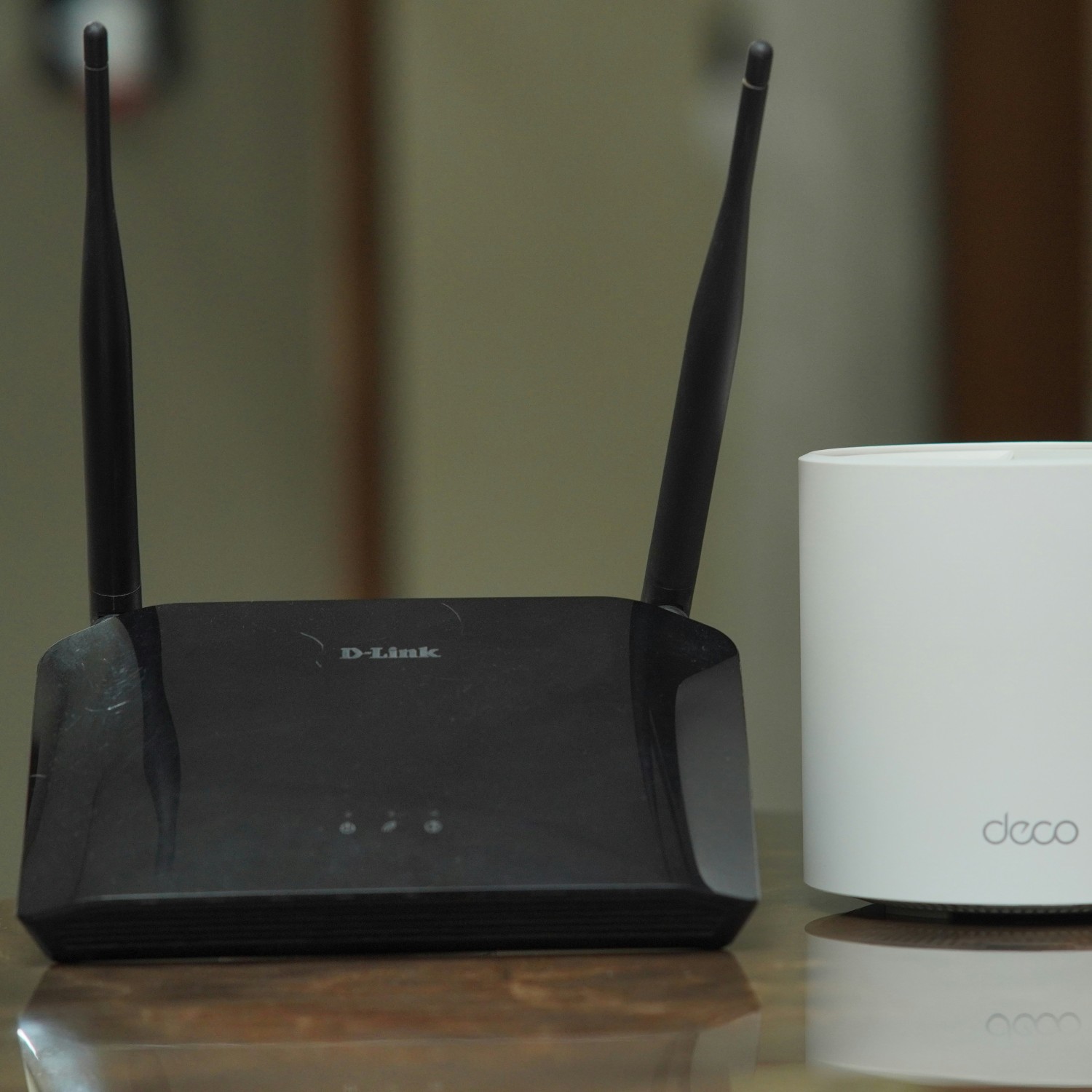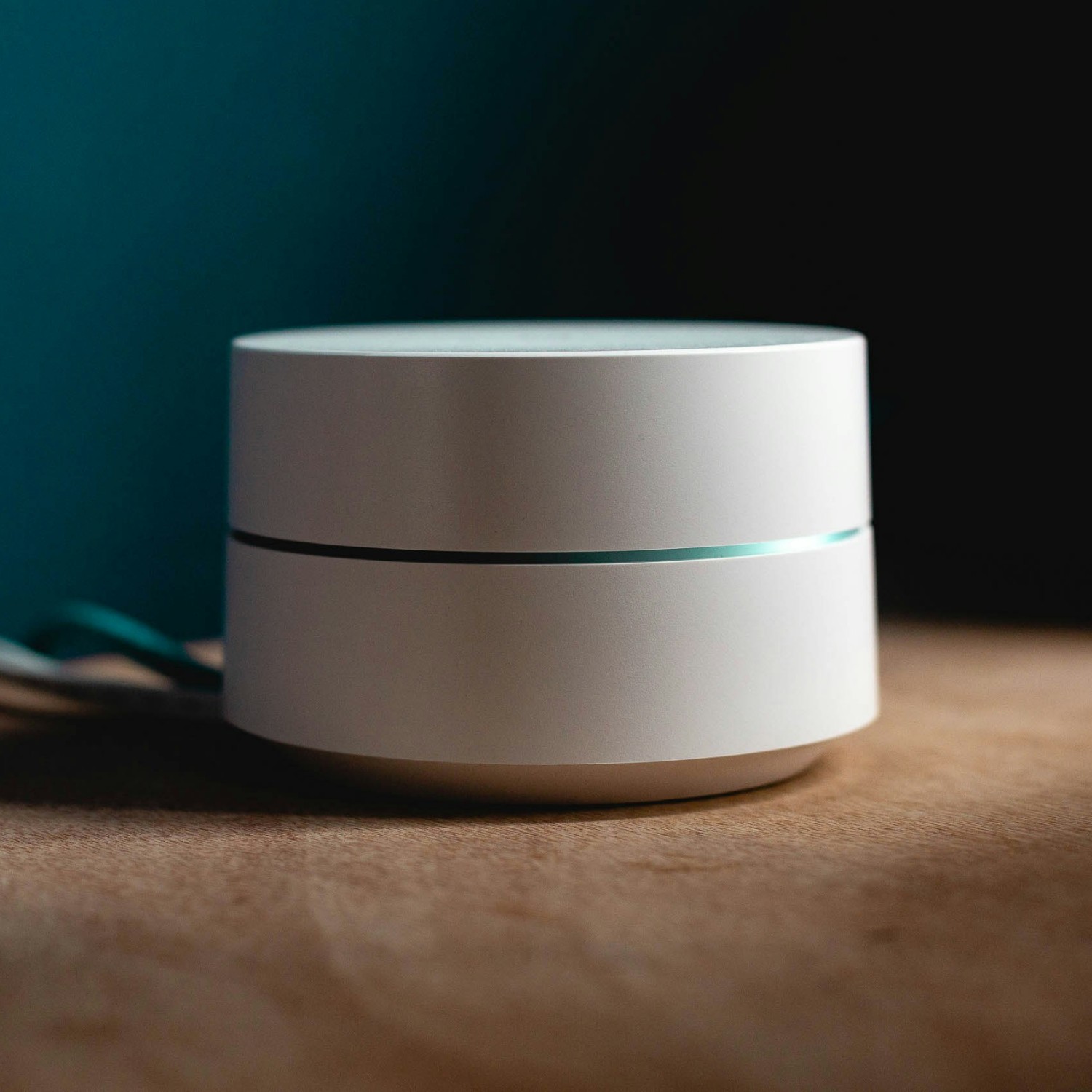Have you ever wondered, can a WiFi extender interfere with a router? WiFi extenders, also known as range extenders, are devices designed to boost the wireless signal from your main router to areas with poor coverage. However, there are instances when using a WiFi extender can lead to interference issues with your router.
When setting up a WiFi extender, it’s essential to ensure that it is strategically placed within the range of your main router but not too close. Placing the extender too close to the router can cause signal interference, leading to slower speeds and connectivity issues. On the other hand, positioning it too far away may result in a weak connection, defeating the purpose of the extender.
Another factor to consider is the frequency band that your router and extender are operating on. If both devices are transmitting on the same frequency, they can interfere with each other, causing signal degradation. To avoid this interference, make sure your extender operates on a different frequency band or channel than your router.
In some cases, using an Ethernet connection to link your extender to the router can help minimize interference issues. This direct connection eliminates the need for wireless signals to transmit between the devices, resulting in a more stable and reliable connection.
While WiFi extenders can be a great solution to extend your network coverage, it’s essential to set them up correctly to prevent interference with your main router.
By strategically placing the extender, using different frequency bands, and considering a wired connection, you can optimize your network’s signal strength and avoid potential interference problems.
Understanding WiFi Extenders and Routers
A reliable WiFi network is essential for both our personal and professional lives. Many of us have experienced dead zones or weak WiFi signals in certain areas of our home or office. This is where WiFi extenders and routers come into play.
A WiFi extender is a device that can help boost the WiFi range of your existing network. It acts as a bridge between your router and wireless devices, such as laptops, smartphones, and tablets.
By placing WiFi extenders strategically in areas that can’t receive a strong WiFi signal, you can effectively expand the coverage of your WiFi network.
When setting up a WiFi extender, remember that it is advisable not to use multiple extenders cascaded in a chain. Instead, opt for one strong extender that can connect directly to the router. This ensures a seamless connection and prevents any potential connectivity issues.
To improve the performance of your WiFi network, consider changing the channel on your router or using an ethernet cable to connect devices directly. You can also place your router in a central location within your home to minimize interference from thick walls and other materials that can block the WiFi signal.
By understanding how WiFi extenders and routers work and implementing these tips, you can ensure a strong and reliable WiFi network throughout your home or office.
Are Mesh WiFi Systems Good for Gaming?
Mesh WiFi systems can be good for gaming, especially in larger homes or spaces where traditional WiFi routers struggle to provide consistent coverage. Mesh systems offer advantages such as seamless roaming between access points, which can help maintain a stable connection as you move around.
The Role of the 2.4 GHz Frequency in WiFi Connectivity
WiFi connectivity is essential in our daily lives, allowing us to stay connected online seamlessly. The 2.4 GHz frequency plays a significant role in ensuring a stable and reliable WiFi connection. Here’s an overview of its importance and how you can optimize your WiFi setup for better performance.
Key Points:
- WiFi Frequency: The 2.4 GHz frequency is widely used for WiFi connections, offering good coverage and penetrating through walls and obstacles effectively.
- Interference Issues: WiFi signals can face interference from electronic devices such as microwaves, cordless phones, and even neighboring WiFi networks operating on the same frequency.
- Range Extenders: WiFi extenders or range extenders can help boost the WiFi signal strength and eliminate dead zones in your home or office.
- Optimizing Connectivity: To enhance your WiFi network, consider using multiple WiFi extenders strategically placed to cover larger areas and improve signal strength.
- Channels and SSIDs: Changing the channel on your main router can reduce interference, while setting unique SSIDs for each network can help avoid signal conflicts.
- Ethernet and WiFi Extenders: Connecting WiFi extenders via Ethernet can provide a more stable connection and improve the overall bandwidth for your devices.
- Handling Interference: Materials like metal and thick walls can block WiFi signals, so ensure your main router is located in a central area for better coverage and connectivity.
- Wireless Access Points: Directly connecting to the router using an access point can offer faster and more reliable WiFi speeds, especially in high-traffic areas.
By understanding the role of the 2.4 GHz frequency in WiFi connectivity and optimizing your setup with WiFi extenders, you can enjoy a seamless and uninterrupted online experience.

Materials and Objects That Can Block or Weaken WiFi Signals
Are you facing weak Wi-Fi signals at home? It might be due to certain materials and objects that block or weaken Wi-Fi signals. Understanding what can interfere with your network can help you enhance your Wi-Fi connection.
Let’s explore some common factors that might be impacting your signal strength:
Materials that Can Block Wi-Fi Signals: Certain materials and objects can hinder the reach of your Wi-Fi network. Keep an eye out for these things:
- Concrete walls and floors
- Metal objects and structures
- Mirror and glass surfaces
- Brick walls
Using Wi-Fi Extenders and Repeaters: Wi-Fi extenders, also known as repeaters, can help boost your signal in areas of your home with weak coverage. Consider the following tips:
- Install a Wi-Fi range extender to amplify your network’s reach.
- If one extender doesn’t work, try using multiple Wi-Fi extenders strategically placed throughout your home.
Optimizing Your Wi-Fi Network: Improve your Wi-Fi signal by following these suggestions:
- Ensure your Wi-Fi router is placed in a central location in your home.
- Rename your network SSID to make it easier to identify and connect to.
- Upgrade your router for better performance.
Connecting Wi-Fi Extenders: When connecting extenders to your network, here’s what you should keep in mind:
- Connect the extender to your main router for seamless integration.
- Utilize different channels and network names for each extender to avoid interference.
- Use both the 2.4 GHz and 5 GHz bands for optimal coverage.
By understanding the materials and objects that can impact your Wi-Fi signal strength and implementing these tips, you can enhance your home network and enjoy a faster and more reliable connection.
Can WiFi Extenders Cause Interference With Your Router?
WiFi extenders, also known as WiFi repeaters or WiFi range extenders, are popular devices used to boost WiFi signals in areas where the WiFi router may be out of reach. However, some users have reported issues with these extenders potentially causing interference with the wireless router, leading to connectivity problems with their WiFi devices.
One common problem that users face is that sometimes, despite installing a WiFi extender or range booster, they still can’t use the internet effectively. This could be due to the extenders not being properly set up or not being compatible with the existing WiFi network. In such cases, these WiFi extenders don’t work as intended, resulting in a frustrating experience for users.
When setting up WiFi extenders, it’s important to ensure that they are connected to the main router properly. Failure to do so could result in the extenders creating different networks, making it difficult for devices to get WiFi seamlessly. To avoid such issues, it’s recommended to connect the extender to the WiFi router first before trying to connect another WiFi repeater.
In instances where the WiFi signal is weak due to the router being far away or blocked by large pieces of furniture, using a WiFi repeater is a good solution. By placing the extender close to the main router via a strong signal area, users can ensure that they receive full speed internet connectivity without experiencing slow or spotty connections.
While WiFi extenders can be helpful in extending WiFi coverage, it’s important to configure them properly to avoid any potential interference with the WiFi router or other wireless devices in the network.
By following the correct setup procedures and placing the extenders strategically, users can enjoy seamless internet connectivity throughout their homes.
Can a WiFi Extender Mess Up Your Router?
A common concern among users considering a WiFi extender is whether it can potentially disrupt the functionality of their WiFi router. The answer to this largely depends on how the extender is set up and various other factors that come into play.
One of the main issues that users may face is interference between the extender and the WiFi router. If the extender is placed too close to the router, it may result in signal overlap and cause the devices to can’t use effectively. In this case, the WiFi devices may don’t work as expected as they struggle to differentiate between the two signals.
Moreover, if there are materials can block the wireless router signal nearby, such as large pieces of furniture or walls, the effectiveness of the wireless extenders may be compromised. This can lead to a signal is weak and therefore result in slow or spotty internet connectivity.
To get the most out of your WiFi extender, it’s important to ensure that you set it up correctly. One tip is to place the extender within the close range of the main router via a strong signal but not too close to avoid interference. Connect the extender to the strongest signal to make sure you are getting the internet at full speed.
How Far Should WiFi Extender Be From Router?
The optimal distance between a WiFi extender and a router depends on various factors such as the type of extender, the strength of the router’s signal, and the layout of your space.
However, a general rule of thumb is to place the extender about halfway between the router and the area where you want to improve WiFi coverage.
This ensures that the extender can receive a strong signal from the router while effectively extending coverage to the desired area. It’s also essential to avoid placing the extender too far from the router, as it may result in a weak connection and reduced performance. Experimenting with different locations can help you find the best spot for optimal coverage and performance.
Here are some additional tips:
- Avoid Obstructions: Place the extender in an open area away from walls, furniture, or other obstructions that could block the signal.
- Test Signal Strength: Use a smartphone, tablet, or laptop to check the signal strength in different locations before deciding on the final placement of the extender.
- Consider the Antenna Direction: If your extender has adjustable antennas, experiment with their orientation to find the best signal reception.
- Avoid Interference: Keep the extender away from devices that may cause interference, such as microwave ovens, cordless phones, or Bluetooth devices.
- Stay Within Range: Make sure the extender is within the effective range of the router’s signal. Extenders typically work best when they’re within a reasonable distance from the router but not too close that they’re still in the weak signal area.
- Test and Adjust: After placing the extender, test the WiFi signal in the areas you want to improve. If necessary, adjust the placement of the extender to achieve better coverage.
By following these guidelines and experimenting with the placement of your WiFi extender, you can maximize the effectiveness of your network extension and enjoy better WiFi coverage throughout your home.

How to Use Multiple WiFi Extenders Without Sacrificing Signal Quality?
You might be wondering how to maximize your Wi-Fi signal quality by using multiple extenders. With the right setup and positioning, you can achieve a strong and stable connection throughout your home.
Here’s how you can make the most out of your Wi-Fi extenders without compromising the signal quality:
- Start by selecting quality extenders that support dual-band frequencies, such as 2.4 GHz and 5 GHz bands. This will ensure compatibility with your devices and optimal performance.
- Place the first extender in a central location where your Wi-Fi signal is strongest. This will help extend the range in all directions and provide a solid base for further expansion.
- When adding a second extender, connect it to the strongest signal available, preferably the first extender. This will help maintain consistency in your network and avoid signal interference.
- If possible, position the extenders relatively close together to create a seamless network. This will allow your devices to switch between the extenders effortlessly and stay connected without disruptions.
- If you need to cover a larger area, consider placing a third extender on the opposite side of the house. This will ensure that all areas receive adequate signal coverage for your devices to operate smoothly.
- Keep in mind the signal range of each extender and position them within range of each other to ensure optimal performance. Avoid obstacles like walls that can weaken the signal strength and reduce overall Wi-Fi speeds.
By strategically placing and configuring multiple Wi-Fi extenders in your home, you can effectively extend the range of your Wi-Fi network without sacrificing signal quality.
Enjoy better connectivity and faster speeds throughout your living space by boosting the signal strength with multiple extenders.
Optimizing Your Router and WiFi Extender Setup for Maximum Efficiency
Is your internet connection causing frustration with slow speeds and dropped signals? Optimizing your router and WiFi extender setup can significantly improve your online experience.
Here are some key steps to ensure maximum efficiency:
- When setting up your router and extender, it’s vital to connect them properly to enhance your network coverage. Ensure your extender is placed within the reach of your router for seamless connectivity. Connecting both devices over the 2.4 GHz band can yield optimal results and work fine for most households.
- If your current setup isn’t cutting it, adding another extender can extend your network even further. When setting up multiple extenders, it’s essential to connect to the strongest signal to maintain a stable connection. Consider getting a second extender if you have devices operating in areas with poor coverage.
- To enjoy much faster and more reliable internet connection, place your router and extender in central locations in your home. Avoid obstacles like a number of walls that can weaken your signal. This ensures that every corner of your house is covered, preventing you from getting a weak signal.
By following these steps, you can optimize your router and WiFi extender setup for better connectivity. Say goodbye to slow speeds and lagging connections with these simple yet effective tips.
Troubleshooting Common WiFi Extender and Router Interference Issues
Having trouble with your WiFi extender and router connection? Here are some tips to help you troubleshoot common interference issues so you can enjoy seamless internet connectivity.
- Make sure your WiFi extender and router are both powered on and functioning properly.
- Check the distance between your devices. WiFi extenders work best when placed within a reasonable range of the router.
- Avoid placing your extender near thick walls, metal objects, or other electronics that could interfere with the signal.
- Ensure that your extender is connected to the same network as your router to avoid connectivity issues.
- Update the firmware of your extender and router to the latest versions to fix any bugs or performance issues.
- If you’re still experiencing problems, try resetting your extender to its factory settings and reconfigure it from scratch.
- Consider upgrading your extender or router to a newer model with better signal strength and range.
By following these troubleshooting tips, you can improve the connection between your WiFi extender and router for a more reliable internet experience.
A mesh WiFi system utilizes multiple interconnected access points to create a seamless network, ensuring consistent coverage and reliable internet connectivity throughout a home or office space.



